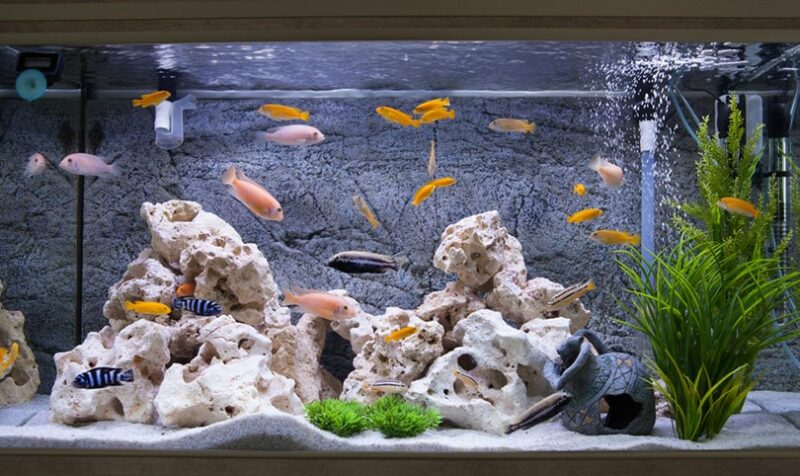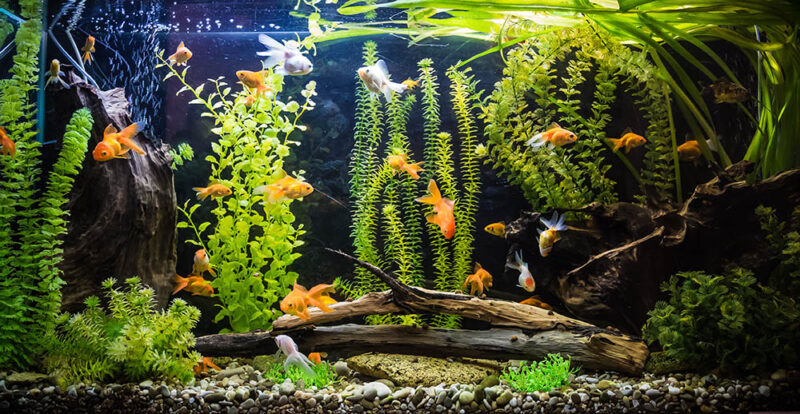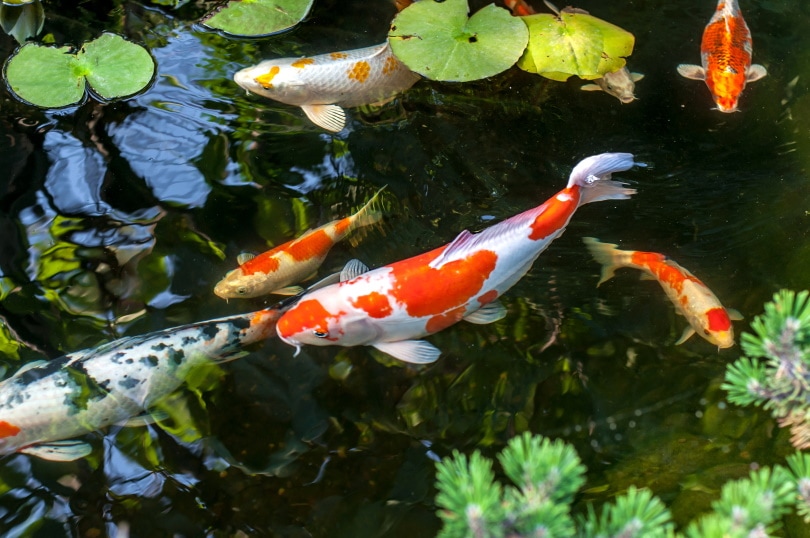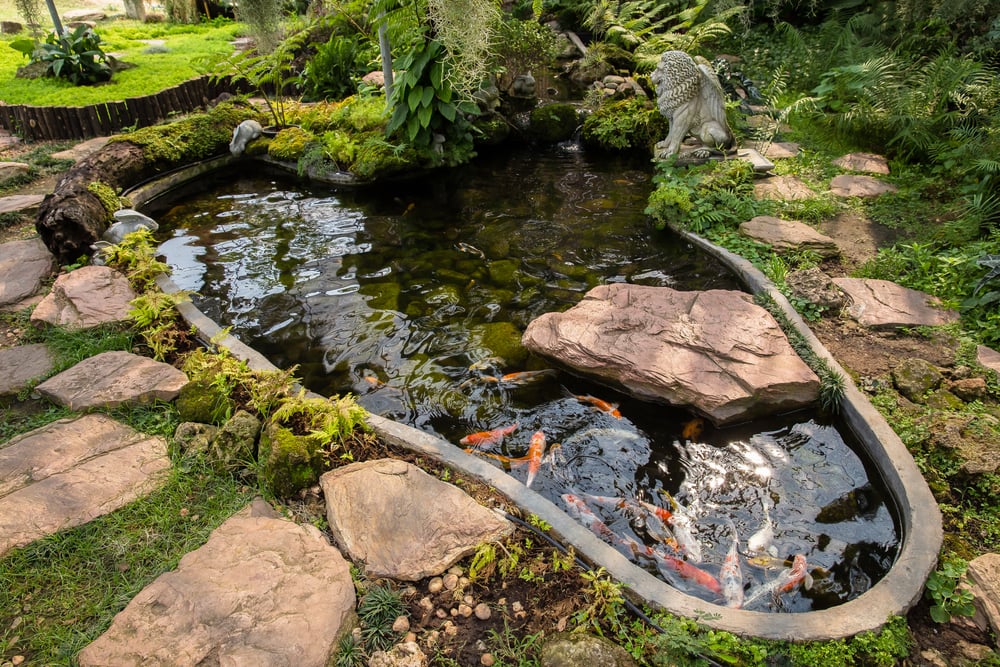Did you know that the first manual for building aquariums was published in 1854? It’s true. An English “natural scientist” by the name of Phillip Henry Gosse was so enamored with building aquatic worlds for his fish and plants to live in that he also created the first public aquarium, displaying it at the London Zoo.
Since the publishing of his manual, titled The Aquarium: An Unveiling of the Wonders of the Deep Sea, it’s become possible for home enthusiasts to build their own aquariums with minimal time, effort, and expense. Once you have your tank picked out and have selected fish and plants, however, there’s still one essential component missing — sand!
One of two commonly used substrates for building aquatic habitats, aquarium sand creates a safe and habitable environment for fish and plants alike. To help you choose the best sand for your aquarium, we’ve put together this list of reviews for the six best aquarium sands available today.
A Quick Comparison of Our Favorites in 2024
| Image | Product | Details | ||
|---|---|---|---|---|
| Best Overall |
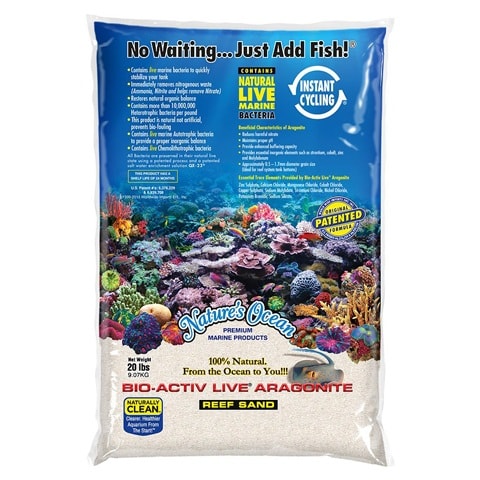
|
Nature’s Ocean Bio-Activ Live Aragonite Aquarium Sand |
|
Check Price |
| Best Value |

|
Aqua Terra Aquarium & Terrarium Sand |
|
Check Price |
| Premium Choice |

|
CaribSea Super Naturals Crystal River Freshwater Sand |
|
Check Price |
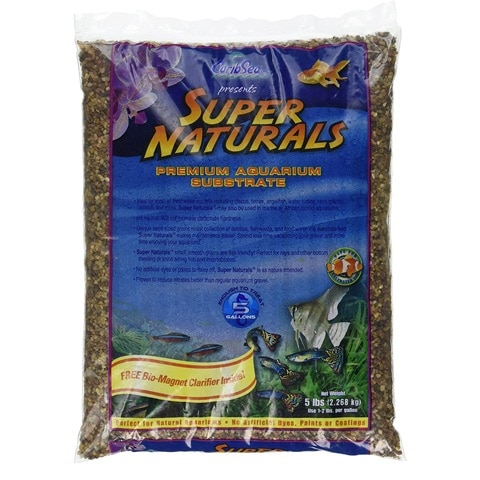
|
Carib Sea Super Natural Peace River Sand |
|
Check Price | |

|
Stoney River White Aquatic Sand |
|
Check Price |
The 6 Best Aquarium Sands:
1. Nature’s Ocean Bio-Activ Live Aragonite Aquarium Sand – Best Overall
The best possible sand that you can use for a saltwater aquarium will always be the sand that most closely matches a fish’s natural habit: the ocean. That’s why we love the Nature’s Ocean Bio-Activ Live Aragonite Aquarium Sand. It’s sustainably harvested right from the ocean and comes fully loaded with live marine bacteria that will quickly condition and stabilize your aquarium.
By eliminating nitrogenous waste with its natural bacteria, the Nature’s Ocean Aragonite aquarium sand helps to maintain proper levels of nitrate, nitrite, and pH. Choosing it for your aquarium will minimize any shock new fish will experience when added to the tank and reduce overall maintenance requirements over time.
On top of its remarkably functional features, this sand from Nature’s Ocean also contributes to an attractive, minimal display. It’s naturally off-white, and not prone to clouding the water in your tank.
In short, there’s no other sand that we’d rather have for our saltwater aquariums than this one from Nature’s Ocean.
2. Aqua Terra Aquarium & Terrarium Sand – Best Value
While many aquarium sands are designed specifically for use in either freshwater or saltwater tanks, there are a few worthwhile options out there that can be used for a variety of purposes. Chief amongst these is the Aqua Terra Aquarium & Terrarium Sand, a natural substrate coated in colorfast acrylic that prevents it from negatively impacting water chemistry.
Available in seven bright and attractive colors, this sand from Aqua Terra is so reasonably priced that it may very well be the best aquarium sand for the money. If you’re on a tight budget but don’t want to sacrifice aesthetics in your freshwater or saltwater aquarium, it’s an excellent choice — as long as you don’t mind taking the time to thoroughly rinse it before use.
In the end, the only reason that this sand from Aqua Terra didn’t secure our number one spot is its inconsistency from bag to bag. While some bags you receive may be perfect and require almost no rinsing at all to produce clear water, the occasional bag will require five to ten rinses before it runs clear.
3. CaribSea Super Naturals Crystal River Freshwater Sand – Premium Choice
Entirely natural and uncoated, the CaribSea Super Naturals Crystal River Freshwater Sand is akin to our top pick in its ability to create a perfect environment for your freshwater fish friends. Harvested directly from riverbeds, this sand from CaribSea is full of living freshwater bacteria that will purify and maintain the water quality for your aquarium.
Furthermore, the Super Naturals sand is fortified with a clarifier and water conditioner — making it one of the most convenient and low-effort substrates we’ve ever tested. Simply add it to a tank full of tap water, wait half a day, and your tank will be fully prepared to introduce your fish into.
The exceedingly small grain size of this sand can give some water pumps trouble, but not if you follow the directions provided with the clarifier. Overall, the CaribSea Super Naturals is our top choice for freshwater tanks, even though it does carry a significantly higher price tag.
4. Carib Sea Super Natural Peace River Sand
One of the only sands in our review to feature a medium to large grain size, the Carib Sea Super Natural Peace River Sand offers a different sort of aesthetic that is suitable for both freshwater and saltwater tanks. Made in the USA from sustainably harvested water sources, it’s an eco-friendly option that is only limited by its hefty price tag.
As with all the sands produced by Carib Sea, this Peace River Sand is specially treated so as not to influence your tank’s pH levels. The larger grain size makes it easier to remove for cleaning, giving it a longer lifespan than any other sand we tested.
In short, this is excellent low-maintenance sand for either freshwater or saltwater aquariums but is better suited to small aquariums thanks to its greater cost per pound.
5. Stoney River White Aquatic Sand
When you’re thinking about designing an aquarium, sometimes functional issues can crowd out aesthetic choices. But if you’re committed to the idea of having gleaming white sands in your beautifully arranged aquarium, we have an excellent option for you: Stoney River’s White Aquatic Sand.
Suitable for both marine and freshwater tanks, this safe and non-toxic sand has been thoroughly coated in a brilliant white exterior. While it won’t affect your tank’s pH or chemical balance, we found that it took a lot of rinsing before our tank water was able to run clear. This, combined with its penchant for clogging water pumps, is a big strike against this sand from Stoney River — but not a total deal-breaker.
6. Seachem Onyx Sand
A perfect counterpart to the previous sand from our list, Seachem’s Onyx Sand is as dark a sand as you can find for your aquarium without introducing artificial chemicals or dyes. Completely natural and suitable to both freshwater and saltwater aquariums, it’s a distinctively colored option that will require a lot of rinsing and preparation before adding to your tank.
Though the manufacturer states that this sand is pre-washed, after transport we’ve found it to still be incredibly dusty. Be prepared to rinse it a dozen or more times to achieve complete clarity in your tank; if you avoid this step, you can expect to have slightly grey water.
If you’re willing to put in this extra effort, however, you’ll be rewarded with a strikingly black seafloor that perfectly complements the colors of many exotic fish.
Buyer’s Guide
Designing and building a suitable ecosystem for your aquatic friends will require knowledge of everything that goes into your fish tank. To better acquaint yourself with the specifics of aquarium sand, read through our mini-guides to the following topics. Once you’ve studied up on every aspect of aquarium sand, you’ll know exactly how to pick out which one is best for your aquarium.
Aquarium Sand vs Gravel: Which Is Better?
Seen in one way, sand is just a much smaller version of gravel; they both have the same mineral and chemical composition, after all. What makes each substrate better than the other in your aquarium, then?
Let’s look at their respective pros and cons:

Furthermore, many people seem to prefer the look of sand over gravel, thanks to its more “natural” appearance and colors.
In short, sand is a lower-maintenance option that has the benefit of preventing the buildup of rotting food or plant matter but may not be perfect for all types of fish. Check with your local pet shop if you’re not certain what type of substrate any given fish needs.
What to Look for In an Aquarium Sand
Choosing the right sand for your aquarium has much more to do with what is not in it than what is.
In short, the best aquarium sands are those that are as close to natural as possible, with no artificial dyes or colors added that can cloud your water or harm your fish. Any sand you choose should have a neutral or close to neutral pH rating — otherwise, it may create an environment that’s toxic and potentially deadly for your fish.
Some of our favorite aquarium sands are the so-called “active” variety — sands that still have all of the lifeforms that you would find in a living oceanic environment. Though they’re often more expensive than standard sand, they have the advantage of setting your aquarium up for long-term success by introducing beneficial microorganisms that help to keep your tank clean.
How Much Aquarium Sand Do You Need?
Depending on your design plans and what sort of fish and plants will be living in your aquarium, average depths will range from 1.5 to 2 inches for a shallow bed, or 6 to 8 inches for a deep bed that’s suitable for burrowing creatures.
As a rule of thumb, you can count on using about 1.5 pounds of sand for every gallon of volume in your aquarium tank.
 Conclusion
Conclusion
For anyone that has their eyes on building a saltwater aquarium, there’s no better choice than the Nature’s Ocean Bio-Activ Live Aragonite Aquarium Sand. It’s an all-in-one solution to setting up an aquatic habitat for saltwater fish. Unlike many sands in our reviews, it also doesn’t require any extra set up or preparation before adding your fish to the tank — which is why we give it our highest recommendation as the best aquarium sand for saltwater tanks.
A low-cost alternative for anyone designing a freshwater aquarium is the Aqua Terra Aquarium & Terrarium Sand, our pick for the best value aquarium sand. You’ll need to put a little extra work into rinsing and preparing it prior to use, but this is a small inconvenience given the Aqua Terra sand’s bargain price.
For more reviews on Aquarium gear, check out these posts:
Featured Image: Tatiana Volgutova, Shutterstock

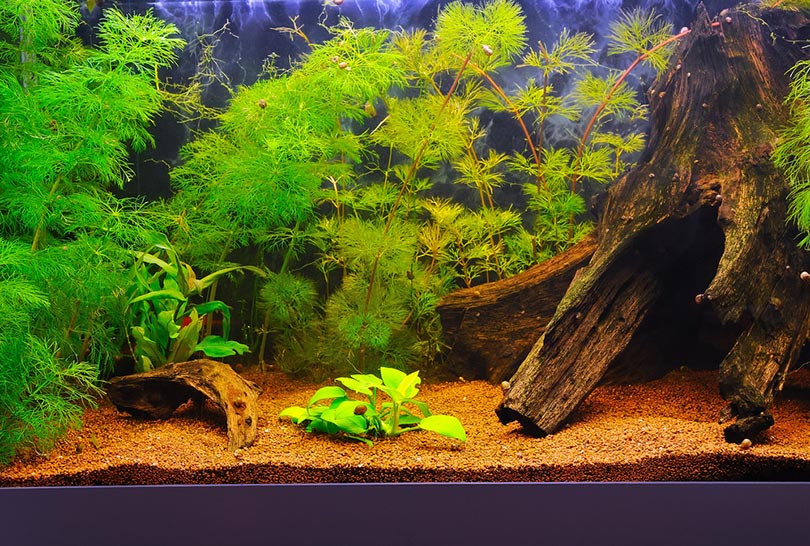





 Conclusion
Conclusion